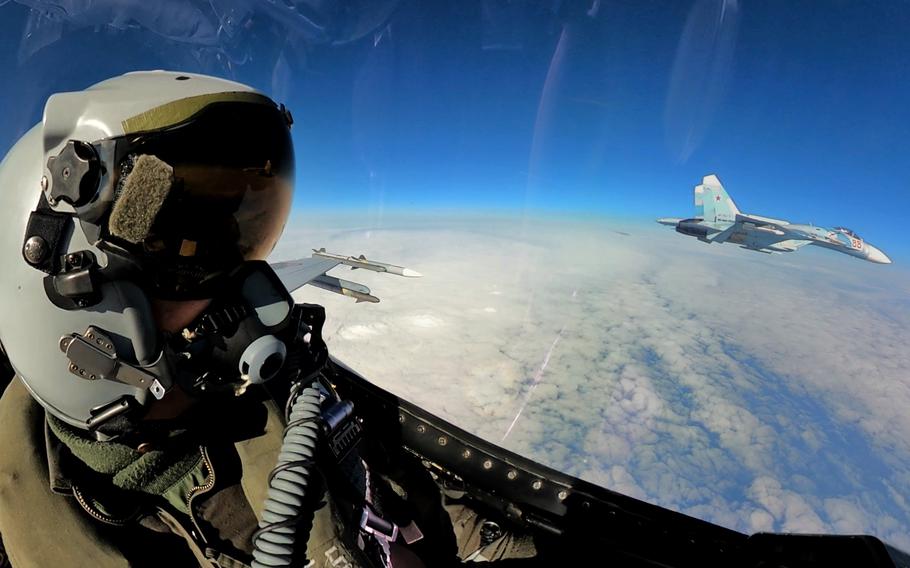
A Romanian air force F-16 intercepts a Russian fighter jet flying in international airspace above the Baltic Sea near NATO territory in April 2023. On Friday, NATO said it had scrambled fighter planes more than 300 times this year to intercept Russian military aircraft flying near the airspace of member countries. (NATO Air Command)
NATO scrambled fighter planes more than 300 times this year to intercept Russian military aircraft flying near member countries’ airspace, according to an alliance statement Friday, a number that represents a notable decline from the previous year’s.
The spike to about 570 intercepts in 2022 came during a time of high tension as Russia launched its full-scale invasion of Ukraine in February of that year. It’s unclear why the pace of intercepts slowed in 2023, since tensions with Russia remain high.
That’s in part due to the addition of Finland to the alliance in April. The Finnish decision to seek NATO membership resulted from the invasion of Ukraine, as Finland shares an 830-mile-long border with Russia.
Most of the 2023 intercepts occurred over the Baltic Sea, an area where NATO has a standing air-policing mission responsible for guarding against Russian planes approaching allied airspace in unpredictable ways.
“Along NATO’s eastern flank, Russian military aircraft have a history of not transmitting a transponder code indicating their position and altitude (as well as) not filing a flight plan,” NATO said in the statement.
The 2022 figure was nearly double that of 2021, German news agency DPA reported at the time.
“Russia’s war against Ukraine has created the most dangerous security situation in Europe in decades,” NATO spokesman Dylan White said Friday. “NATO fighter jets are on duty around the clock, ready to scramble in case of suspicious or unannounced flights near the airspace of our allies.”
Since the 2022 invasion of Ukraine, NATO has bulked up air defenses along its eastern flank and added fighter jets to its air policing mission, which stretches from the Baltics to Romania.
Still, while NATO carries out hundreds of intercepts annually, actual breaches of allied airspace remain rare. And most aerial encounters between NATO and Russian jets are handled safely, NATO said in the statement.
Dangerous episodes have occurred, though. In March, a Russian fighter jet collided with a U.S. drone over the Black Sea, forcing the unmanned aircraft to crash into international waters.
U.S. European Command at the time accused the Russian pilots of “aggressive actions” that “could lead to miscalculation and unintended escalation.”